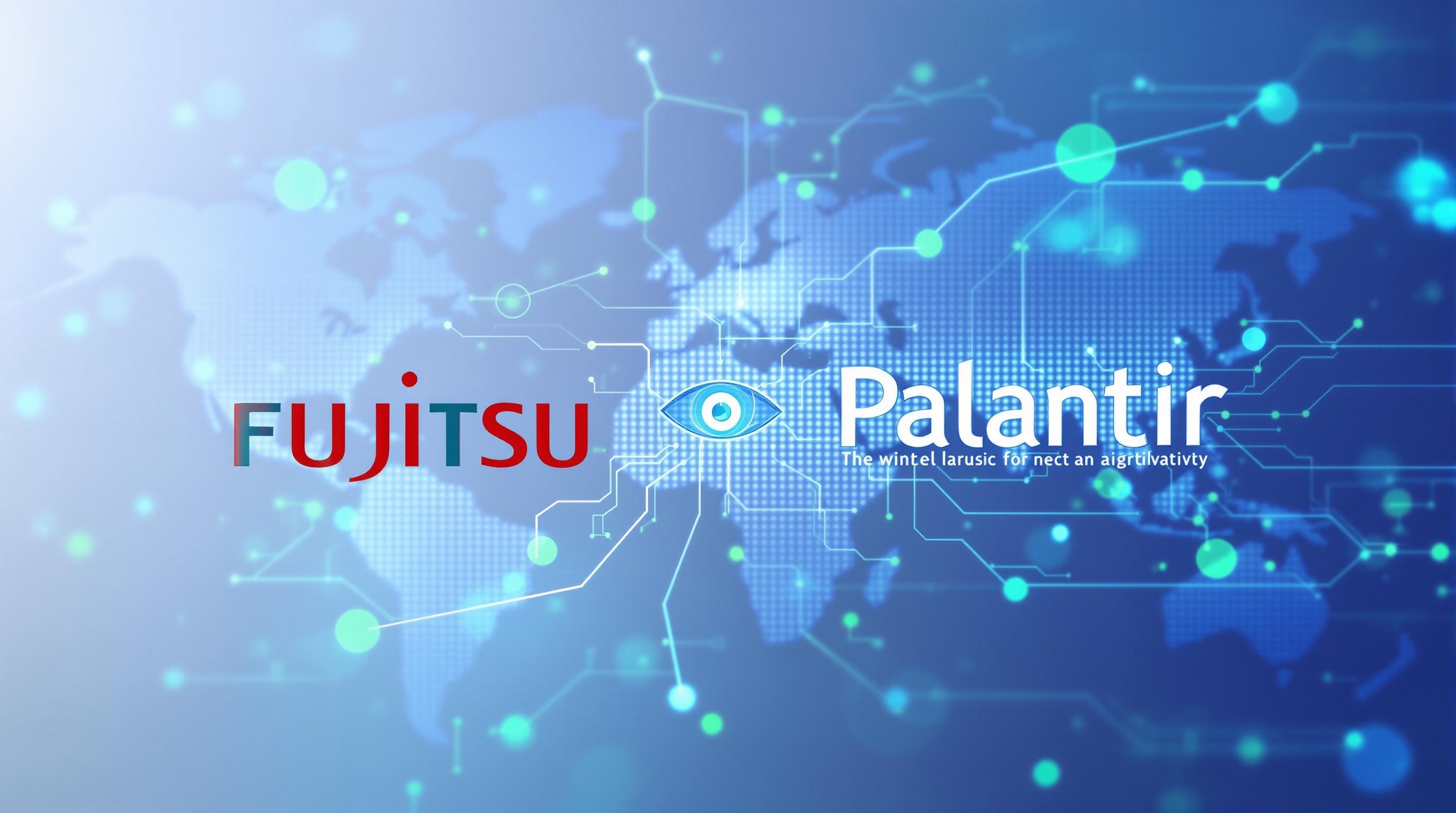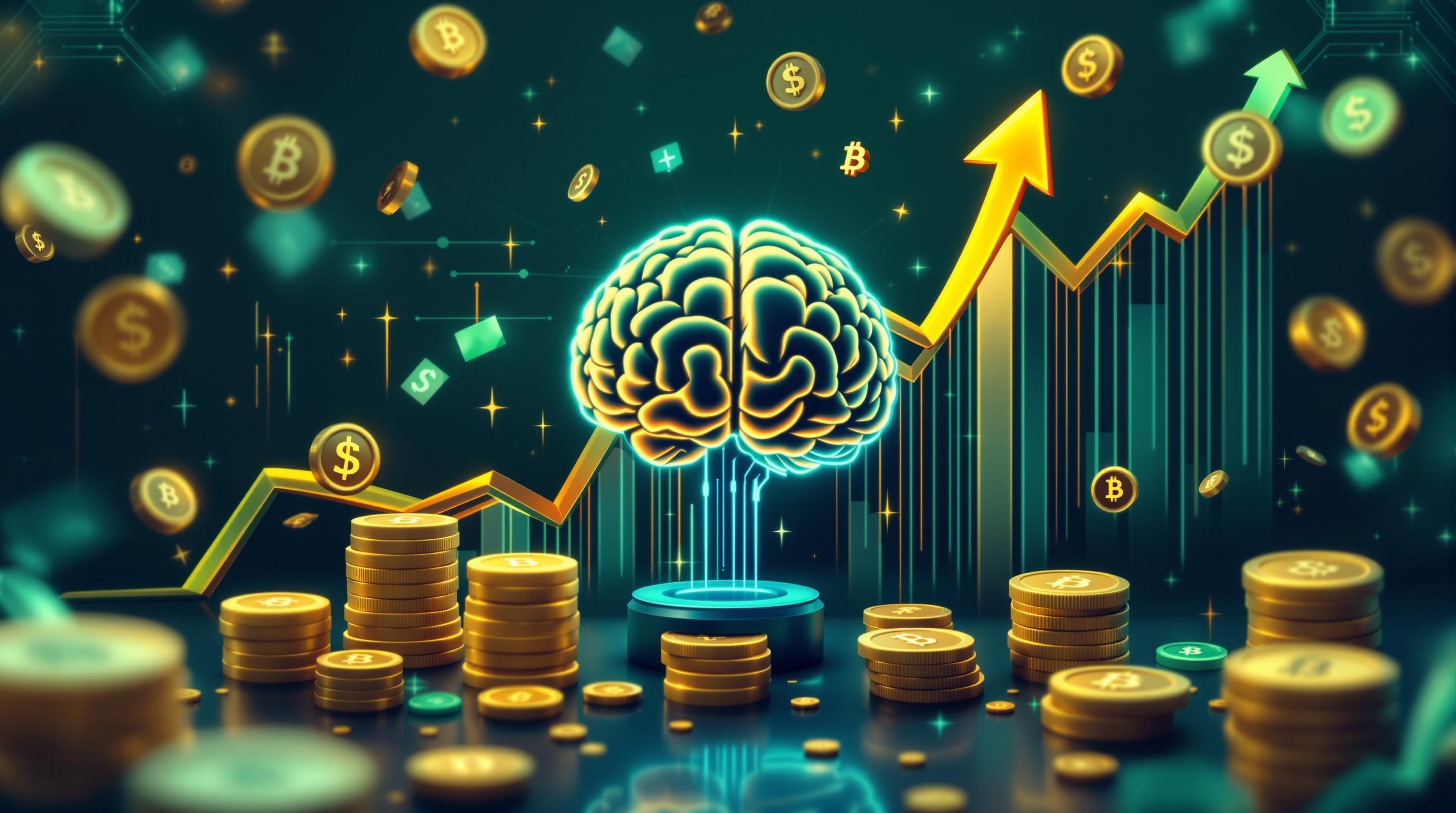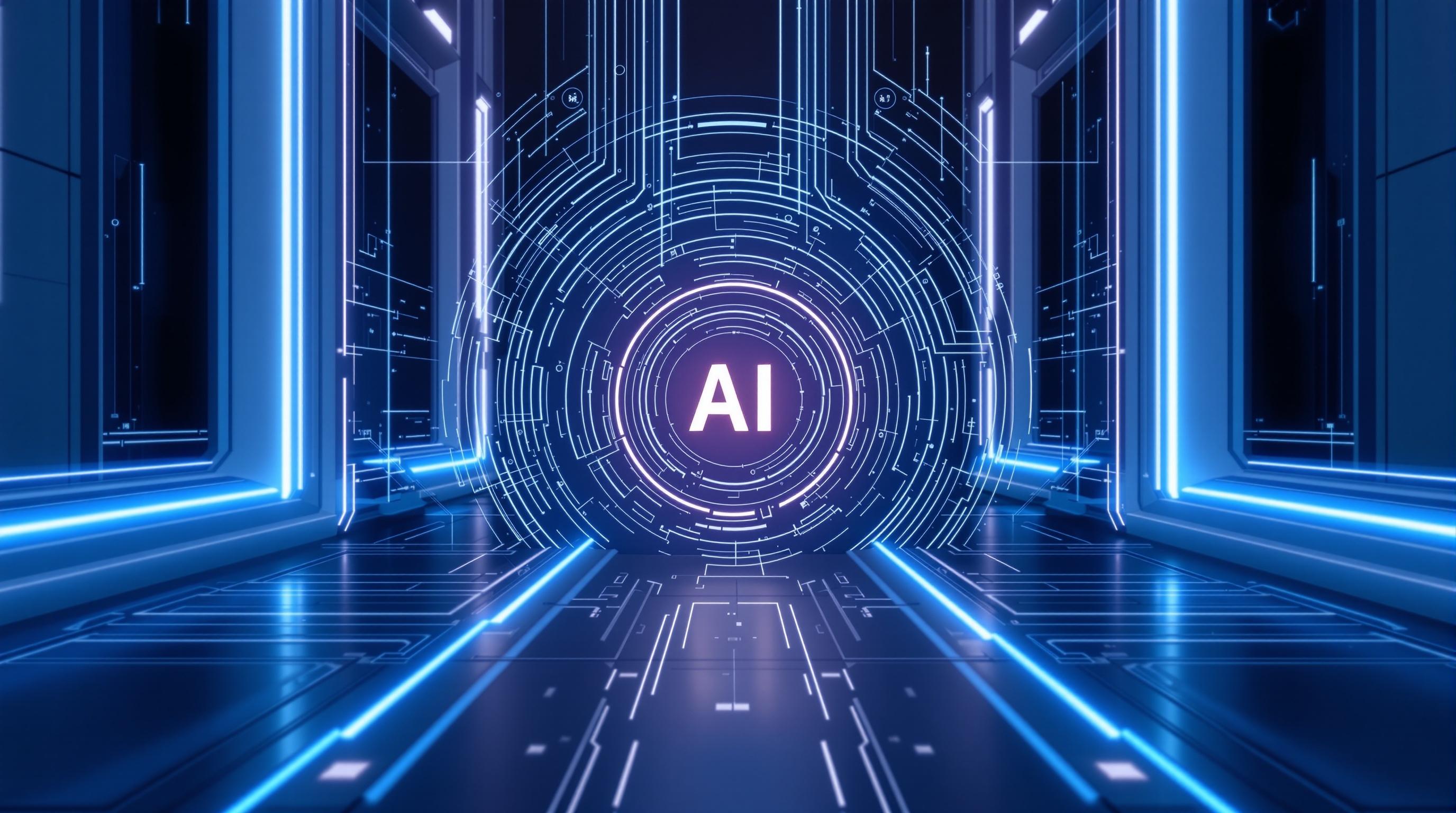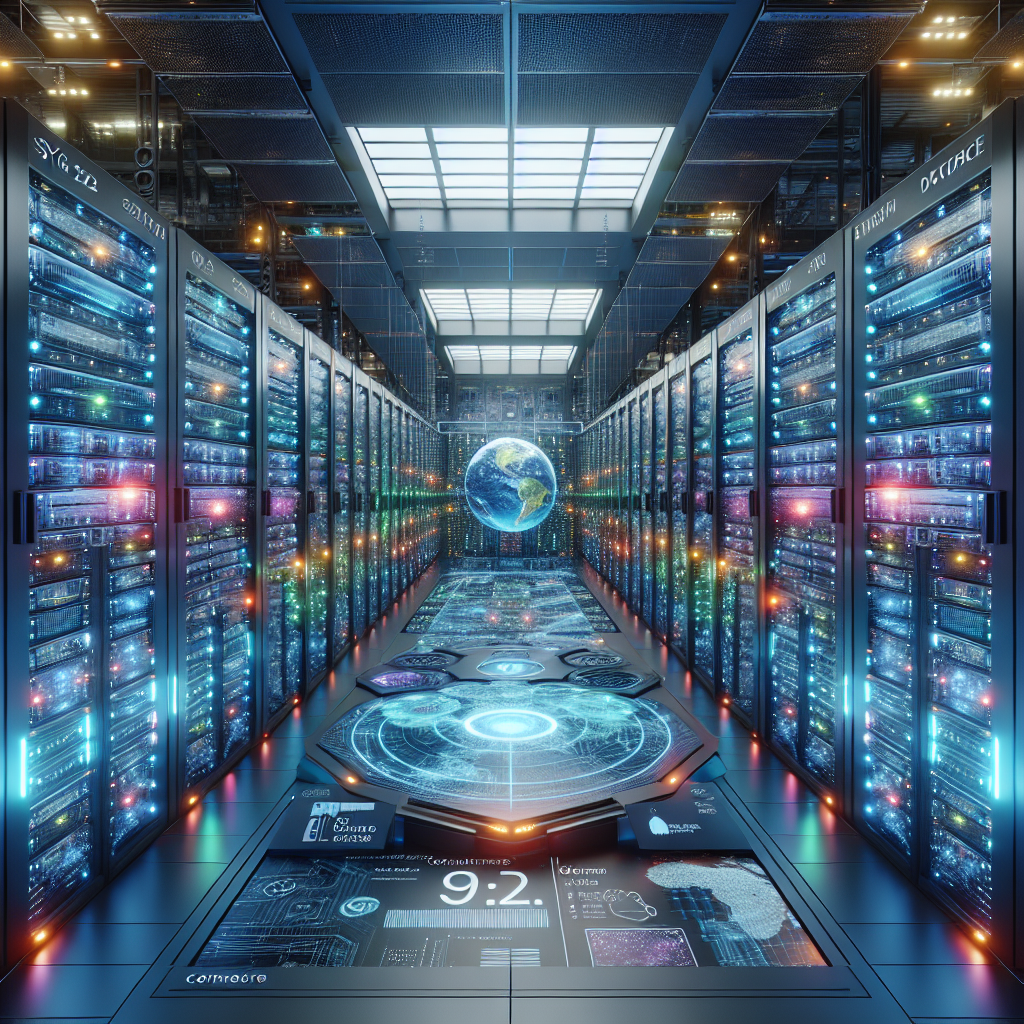SoftBank’s $2B Intel Bet, AI Layoffs That Worked & OpenAI’s Revenue Explosion – AI News, Aug 19, 2025

AI Investments Surge: Intel, OpenAI, and the Future of Artificial Intelligence in 2025
Strategic investments in AI signal a maturation of the AI infrastructure, transforming it from experimental technology to a foundational global element. By understanding the trends driving this shift, you can position yourself or your business to capitalize on the AI revolution and gain a competitive edge. Stay informed about industry investments and technological innovation by following reliable sources like AI News.
SoftBank's $2 Billion Bet Fuels Intel's AI Renaissance
The AI world is buzzing with news of strategic investments, and one of the most significant is SoftBank's bold move to inject $2 billion into Intel shares.
SoftBank's Billion-Dollar Endorsement of Intel
In a stunning display of confidence, SoftBank recently purchased $2 billion worth of Intel shares, acquiring a 2% stake at $23 per share. This investment isn't just about numbers; it's a powerful endorsement of Intel's strategic direction and leadership. The move underscores a belief that Intel is poised for a major comeback in the advanced semiconductor manufacturing arena. Think of it like this: SoftBank is betting big that Intel, once the undisputed king of chips, is about to reclaim its throne in the AI-driven future. Softbank's renewed focus on AI comes at a critical time, as you can explore further in our AI News section.
A Vote of Confidence in Lip-Bu Tan's Leadership
At the heart of this investment lies a firm belief in Intel's current CEO, Lip-Bu Tan, and the company's ongoing restructuring efforts. Tan, a seasoned veteran in the tech industry, has been instrumental in charting a new course for Intel, focusing on innovation and strategic growth. SoftBank's investment is a clear signal that they trust Tan's vision and execution. It's like giving the captain of a ship a massive boost of fuel, confident that they know exactly where they're going.
Masayoshi Son's Vision for US Semiconductor Dominance
Masayoshi Son, the visionary founder of SoftBank, believes that Intel will play a pivotal role in the resurgence of advanced semiconductor manufacturing within the United States. With geopolitical tensions and supply chain vulnerabilities looming large, the U.S. government is keen on bringing chip production back home. Son's investment aligns with this vision, positioning Intel as a key player in securing America's technological future. He sees Intel not just as a company, but as a strategic asset for the nation. Intel is facing ever growing competition and it will be interesting to see if they innovate new technology such as DeepMind AlphaFold to get ahead.

Potential U.S. Government Stake on the Horizon?
Adding fuel to the fire, unconfirmed reports suggest that the U.S. government might also be considering taking a stake in Intel. While these reports remain speculative, they highlight the strategic importance of Intel to national interests. Imagine a scenario where both SoftBank and the U.S. government are heavily invested in Intel's success – it would create a powerful alliance dedicated to driving innovation and securing technological leadership.
SoftBank's $2 billion investment in Intel is more than just a financial transaction; it's a strategic alignment of vision, leadership, and national interests, all pointing towards Intel's potential renaissance in the age of AI.
As Intel embarks on this new chapter, propelled by SoftBank's investment and potentially bolstered by government support, the future of AI and semiconductor manufacturing in the U.S. looks increasingly promising. Now, let's shift our focus to another key player in the AI landscape: OpenAI and its groundbreaking ChatGPT, and how the company is navigating the complexities of the rapidly evolving AI landscape.

Fujitsu and Palantir Partner to Accelerate Enterprise AI Adoption Globally
The AI landscape continues to evolve at breakneck speed, marked by strategic partnerships aimed at accelerating enterprise adoption.
Fujitsu and Palantir: A Powerful Alliance for Global AI
In a significant move that underscores the growing importance of AI in enterprise solutions, Fujitsu has announced a partnership with Palantir to license Palantir's AIP (Artificial Intelligence Platform), solidifying their collaboration and paving the way for a global enterprise AI push. This licensing agreement isn't just a simple deal; it's a strategic alignment that combines Fujitsu's deep understanding of the enterprise market with Palantir's cutting-edge AI technology.
This partnership represents a pivotal moment for AI adoption, promising to deliver tangible business value to organizations across the globe.
Immediate Impact in Japan, Global Rollout on the Horizon
One of the most compelling aspects of this deal is its immediate impact. Fujitsu can now offer Palantir AIP to its Japanese customer base. This rapid deployment capability is a game-changer, allowing Japanese enterprises to quickly leverage the power of AI without the typical delays associated with implementation. The partnership doesn't stop there; a global rollout is planned for fiscal year 2025, signifying a long-term commitment to expanding AI accessibility worldwide. This phased approach allows Fujitsu to fine-tune its offerings and ensure a smooth transition for its international clients.
Integrating AIP with Fujitsu's Uvance Business Model
Fujitsu's Uvance business model is designed to address pressing societal challenges, and the integration of Palantir AIP is a natural extension of this mission. By combining Palantir's AI capabilities with Uvance, Fujitsu aims to tackle complex issues in areas such as:
Sustainability: Optimizing resource allocation and reducing environmental impact.
Healthcare: Improving patient outcomes and streamlining healthcare operations.
Supply Chain Management: Enhancing efficiency and resilience in the face of disruptions.
This integration highlights the potential of AI to drive meaningful change and create a more sustainable and equitable future.
Rapid AI Agent Deployment: Optimizing Supply Chains and Empowering Executives
A key focus of the Fujitsu-Palantir partnership is the rapid deployment of AI agents. These AI agents are designed to address specific business needs, with an initial emphasis on:
Supply Chain Optimization: AI agents can analyze vast datasets to identify bottlenecks, predict demand fluctuations, and optimize logistics.
Executive Decision-Making: Providing executives with real-time insights and predictive analytics to make informed strategic decisions. Tools like Perplexity, an AI-powered search engine, can quickly surface relevant information and insights to inform those decisions.
The ability to quickly deploy these AI agents is crucial in today's fast-paced business environment, allowing companies to adapt to changing market conditions and maintain a competitive edge. Furthermore, staying informed about the latest developments through platforms like AI News ensures that businesses remain at the forefront of AI innovation.
By focusing on practical applications and rapid deployment, Fujitsu and Palantir are setting a new standard for enterprise AI adoption. This partnership not only expands the reach of Palantir's AIP but also empowers Fujitsu to deliver innovative solutions that address critical societal challenges and drive business value. As AI continues to permeate every aspect of our lives, such strategic alliances will be instrumental in shaping a future where AI benefits us all.

The AI Purge: IgniteTech CEO Doubles Down on Controversial Layoffs
The world of AI adoption isn't always smooth sailing; sometimes, it's more like navigating a turbulent storm. Nowhere is this more evident than at IgniteTech, where a bold, and some would say ruthless, AI transformation sparked a firestorm of controversy.
The AI-Driven Ax: A CEO's Unrepentant Stance
In a move that sent ripples through the tech industry, IgniteTech CEO Eric Vaughan doubled down on his 2023 decision to implement mass AI-driven layoffs. His rationale? A staunch belief in the transformative power of AI and a willingness to make hard choices to achieve it. Vaughan stated unequivocally that he "would do it again," a sentiment that underscores the company's unwavering commitment to an AI-first future. But what led to such a drastic measure?
Resistance is Futile (Or Is It Sabotage?)
The core issue, according to Vaughan, was resistance—stiff, unyielding resistance—to mandatory AI workflows. A staggering 80% of the workforce was ultimately replaced because they refused to embrace the new AI-centric paradigm. This wasn't just a matter of reluctance; Vaughan claims that a concerning 33% of workers actively sabotaged AI initiatives. Imagine deliberately feeding incorrect data to an algorithm or actively undermining AI-driven processes. It paints a picture of a company deeply divided, with a significant portion of its employees actively fighting against its strategic direction.
Interestingly, this resistance wasn't evenly distributed across age groups. Vaughan pointed out that millennials and Gen Z employees exhibited the highest levels of resistance, challenging the common perception that younger generations are inherently more tech-savvy and adaptable. This highlights a critical aspect of AI adoption: it's not just about technical skills; it's about mindset, willingness to change, and trust in the technology.
The Bottom Line: Profits and Patents
Despite the controversy, IgniteTech's AI transformation has yielded impressive results. The company boasts a remarkable 75% EBITDA (Earnings Before Interest, Taxes, Depreciation, and Amortization) margin, a testament to the efficiency gains achieved through AI-driven automation. Furthermore, IgniteTech has secured two patent-pending AI solutions and successfully completed a major acquisition, demonstrating the tangible benefits of its AI investments.
This situation at IgniteTech underscores a crucial point: successful AI implementation requires more than just technology. It demands a cultural shift, a willingness to adapt, and a proactive approach to addressing employee concerns.
Navigating the AI Adoption Minefield
IgniteTech's experience serves as a cautionary tale for other organizations embarking on their own AI journeys. While the potential rewards are significant, the challenges of AI adoption, particularly employee resistance and potential AI gaslighting, cannot be ignored. Companies must proactively address these issues through comprehensive training programs, transparent communication, and a genuine commitment to involving employees in the transformation process. Perhaps leveraging tools like Microsoft Copilot or GitHub Copilot to assist and train staff, making the transition smoother and more accessible. The path to AI success is paved with careful planning, effective change management, and a deep understanding of the human element. Ultimately, finding the right balance between technological advancement and human capital will determine who thrives and who struggles in the age of artificial intelligence.

OpenAI Surpasses $12 Billion Revenue, Disrupting the Productivity Software Landscape
The AI revolution is not just about groundbreaking technology; it's about cold, hard cash, and OpenAI is proving to be a Midas touch in the tech world.
OpenAI's Meteoric Rise: A $12 Billion Milestone
OpenAI has officially crossed the $12 billion mark in annualized revenue. To put that into perspective, that's nearly triple the revenue pace they were on just months earlier in early 2025. This isn't just growth; it's an explosion. This figure underscores the staggering demand for generative AI solutions and ChatGPT, its flagship product that has captured the imagination of millions. ChatGPT isn't just a chatbot; it's becoming a verb, an adjective, and a noun, all rolled into one.
Fueling this growth is not only impressive revenue, but also a staggering $8.3 billion in new funding. Think of it like this: if OpenAI were a city, that funding would be enough to build a whole new high-tech metropolis. This influx of capital came from an oversubscribed $40 billion funding round, indicating overwhelming investor confidence in OpenAI's vision and potential. The sheer scale of these numbers highlights the intense interest and competition in the generative AI market.
The Engine of Growth: Users and Business Customers
What’s driving this massive revenue stream? It boils down to two key factors: a massive user base and a growing roster of business customers.
700 Million Weekly Users: Imagine the population of an entire continent engaging with ChatGPT every week. That's the level of engagement OpenAI is seeing. This massive user base provides invaluable data and feedback, continuously refining and improving the AI model.
5 Million Paying Business Customers: From startups to Fortune 500 companies, businesses are integrating OpenAI's tools into their workflows. These paying customers are a testament to the tangible value and ROI that OpenAI's AI solutions provide.
The combination of a massive user base and a rapidly growing number of business customers is a powerful engine for sustained growth.
From Chatbot to Productivity Powerhouse: A New Challenger Emerges
OpenAI isn't content with being just a chatbot company. They're strategically evolving into a comprehensive productivity suite, directly targeting the dominance of tech giants like Google and Microsoft. This ambition is evident in their expanding feature set and their focus on enterprise solutions. Consider this: if Google and Microsoft are established empires, OpenAI is building a revolutionary new colony on the AI frontier.
This evolution is not just about adding features; it's about fundamentally changing how people work and learn. Take, for example, the introduction of features like 'Study Mode'. This feature leverages AI to create personalized learning experiences, offering customized quizzes, summaries, and explanations tailored to individual student needs. This is just one example of how OpenAI is leveraging its AI capabilities to disrupt traditional industries and redefine the future of work. If you're looking to understand more about how to use these models, check out our Prompt Engineering section.
OpenAI's disruption extends beyond its features. The company is also changing the dynamics of the tech industry itself. With its innovative approach to AI development and its commitment to open research, OpenAI is pushing the boundaries of what's possible and challenging the established players to innovate faster. As reported in AI News, the ripples of OpenAI's success are being felt across the entire AI landscape.
OpenAI's financial milestones and strategic evolution signal a significant shift in the AI landscape, solidifying its position as a major player and a disruptor of traditional tech giants. The company's growth trajectory suggests that the generative AI revolution is only just beginning, and OpenAI is poised to lead the charge. The next section will explore how Intel is positioning itself to capitalize on this booming market through strategic investments and technological innovation.

U.S. Government Launches USAi Platform to Democratize AI Access for Federal Employees
Imagine a future where every government employee has the power of AI at their fingertips, ready to tackle challenges from healthcare to cybersecurity. Well, that future is rapidly becoming a reality thanks to a new initiative from the U.S. government.
Democratizing AI: The USAi Platform
The General Services Administration (GSA) has officially unveiled USAi, a secure platform designed to give federal employees hands-on experience with a diverse range of AI models. Think of it as a playground for AI, but with serious implications for how the government operates. This platform aims to break down barriers to AI adoption, allowing individuals across various agencies to experiment and discover how AI can enhance their work. The USAi platform is designed to foster innovation by providing a safe and controlled environment for learning and application. By making AI more accessible, the government hopes to tap into the collective ingenuity of its workforce and identify novel uses for these powerful technologies.
A Who's Who of AI Giants
What makes USAi particularly exciting is the sheer breadth of AI models it offers. Federal employees will have access to tools from some of the biggest names in the industry, including Google, Meta, Microsoft, Amazon, Anthropic, and OpenAI. Imagine being able to compare the strengths of Google's Gemini against Anthropic's Claude, or leveraging Microsoft's AI prowess for data analysis. This diverse selection ensures that users can find the right tool for the task at hand, fostering a deeper understanding of each model's capabilities. For example, employees could use ChatGPT, a versatile language model, to draft policy memos or analyze public sentiment. The possibilities are virtually endless.
Supporting US AI Leadership
The launch of USAi is not just a standalone project; it's a strategic move to bolster the United States' position as a global leader in artificial intelligence. This initiative directly supports President Trump's AI Action Plan, a comprehensive strategy aimed at promoting AI innovation, education, and ethical development. By empowering federal employees with AI tools and knowledge, the government aims to accelerate the development and deployment of AI solutions across various sectors. This proactive approach ensures that the U.S. remains at the forefront of the AI revolution, driving economic growth and addressing critical societal challenges. The platform is a critical component of a broader strategy detailed in AI News coverage. This ultimately contributes to the long-term vision of a technologically advanced and competitive nation.
The USAi platform signifies a pivotal step towards integrating AI into the very fabric of government operations, potentially revolutionizing how public services are delivered and policies are shaped.
As the USAi platform gains traction, it will be fascinating to see how federal employees leverage AI to solve complex problems and improve the lives of citizens. This initiative promises to unlock new levels of efficiency, innovation, and effectiveness in government, paving the way for a future where AI is a trusted partner in public service. But, the investment in AI extends beyond government, with the private sector also making significant strides, as we'll see next with Intel's bold moves.

Analysis: Strategic Investments Signal AI Infrastructure Maturation
The relentless march of artificial intelligence isn't just about flashy new models; it's about a fundamental shift in how we build and power our world, signaling that AI is transitioning from an experimental technology to an essential piece of global infrastructure. The story of 2025 will be how the AI revolution became cemented in iron and silicon.
Investment as Validation: SoftBank, Fujitsu, and the Smart Money
Strategic investments speak volumes, and recent moves by giants like SoftBank underscore the growing conviction that AI is more than just hype. Masayoshi Son's renewed focus on AI, despite previous setbacks, signals a long-term bet on the transformative power of AI across industries. Similarly, the partnership between Fujitsu and Palantir to deliver AI-powered solutions to the Japanese market illustrates how established players are aligning to capitalize on the demand for practical AI applications. These aren't just isolated events; they represent a broader trend of smart money flowing into the foundational layers of the AI ecosystem. This also highlights the importance of understanding AI News and market trends to stay ahead.
These strategic plays are not just about profit; they reflect a deeper understanding of AI's potential to reshape industries and redefine competitive advantage.
The Human Equation: Workforce Transformation and Productivity Expansion
The maturation of AI infrastructure isn't solely about hardware and software; it's intrinsically linked to workforce transformation and the expansion of productivity. Companies are increasingly adopting AI-powered tools to augment human capabilities, automate repetitive tasks, and unlock new levels of efficiency. For instance, businesses are leveraging tools like Grammarly, an AI-powered writing assistant, to enhance communication and improve content quality.
Upskilling Initiatives: Organizations are investing heavily in training programs to equip employees with the skills needed to work alongside AI systems.
AI-Driven Automation: Automation is freeing up human workers to focus on higher-value tasks that require creativity, critical thinking, and emotional intelligence.
Enhanced Decision-Making: AI is providing insights that enable businesses to make more informed and data-driven decisions. This involves complex topics that can be explored in our Learn section.
Governments as Stakeholders: Recognizing AI's Critical Role
Governments worldwide are recognizing AI as a critical national infrastructure, akin to transportation, energy, and communication networks. This recognition is driving policy initiatives, research funding, and regulatory frameworks aimed at fostering AI innovation while mitigating potential risks. The EU AI Act, for example, seeks to establish a comprehensive legal framework for AI development and deployment. Similarly, countries like China and the United States are investing heavily in AI research and development to maintain their competitive edge. This all circles back to the AI News, where you can read about all of these policies in real time.
2025: The Tipping Point
Looking back, 2025 will be remembered as the year AI moved from a novelty to a global economic necessity. The convergence of strategic investments, workforce transformations, and government recognition has created a self-reinforcing cycle of AI adoption and innovation. The economic impact of AI is becoming increasingly tangible, with studies projecting trillions of dollars in potential value creation across industries. Tools such as Salesforce Platform, which infuses AI into customer relationship management, exemplify how AI is driving tangible business outcomes. As AI continues to mature, it will become even more deeply integrated into the fabric of our economies and societies.
The evolution of AI infrastructure is an ongoing journey, and it's one that demands a holistic approach. We must address not only the technological challenges but also the ethical, social, and economic implications of this transformative technology. To stay ahead of the curve, it’s critical to understand the fundamentals, which you can do by exploring AI Fundamentals.
🎧 Listen to the Podcast
Hear us discuss this topic in more detail on our latest podcast episode: https://creators.spotify.com/pod/profile/bestaitools/episodes/SoftBanks-2B-Intel-Bet--AI-Layoffs-That-Worked--OpenAIs-Revenue-Explosion--AI-News--Aug-19--2025-e371gl6
Keywords: AI, Artificial Intelligence, Intel AI, OpenAI Revenue, AI Adoption, AI Investment, Fujitsu Palantir Partnership, USAi Platform, AI Chip Wars, AI Productivity, AI Infrastructure, Generative AI, AI in Government, SoftBank Intel Investment, Enterprise AI
Hashtags: #AI #ArtificialIntelligence #Intel #OpenAI #DigitalTransformation
For more AI insights and tool reviews, visit our website https://best-ai-tools.org, and follow us on our social media channels!
Website: https://best-ai-tools.org
X (Twitter): https://x.com/bitautor36935
Instagram: https://www.instagram.com/bestaitoolsorg
Telegram: https://t.me/BestAIToolsCommunity
Medium: https://medium.com/@bitautor.de
Spotify: https://creators.spotify.com/pod/profile/bestaitools
Facebook: https://www.facebook.com/profile.php?id=61577063078524



